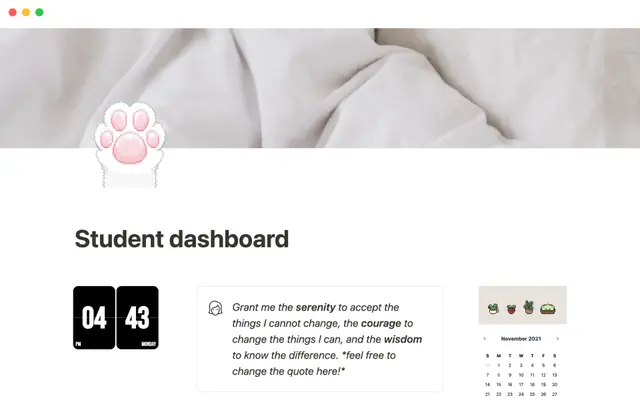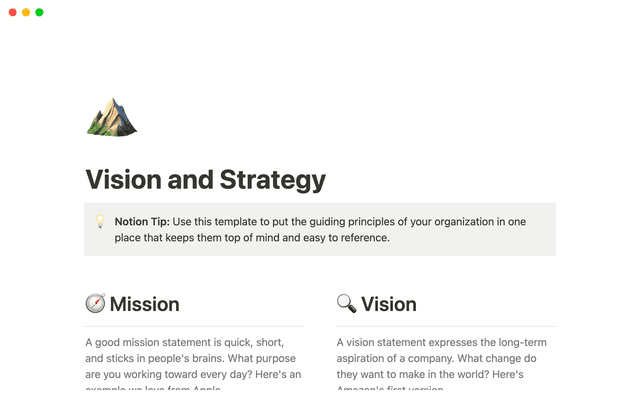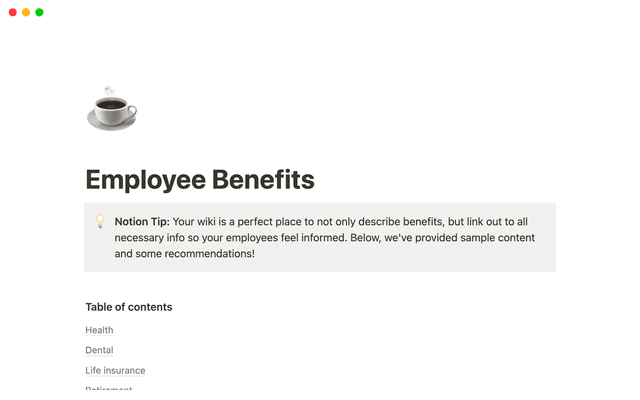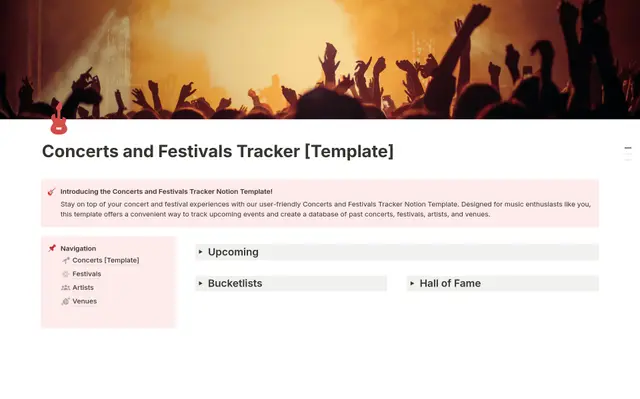Create a hybrid work hub
Set clear expectations, provide resources, and engage your employees in conversations about your working environment.
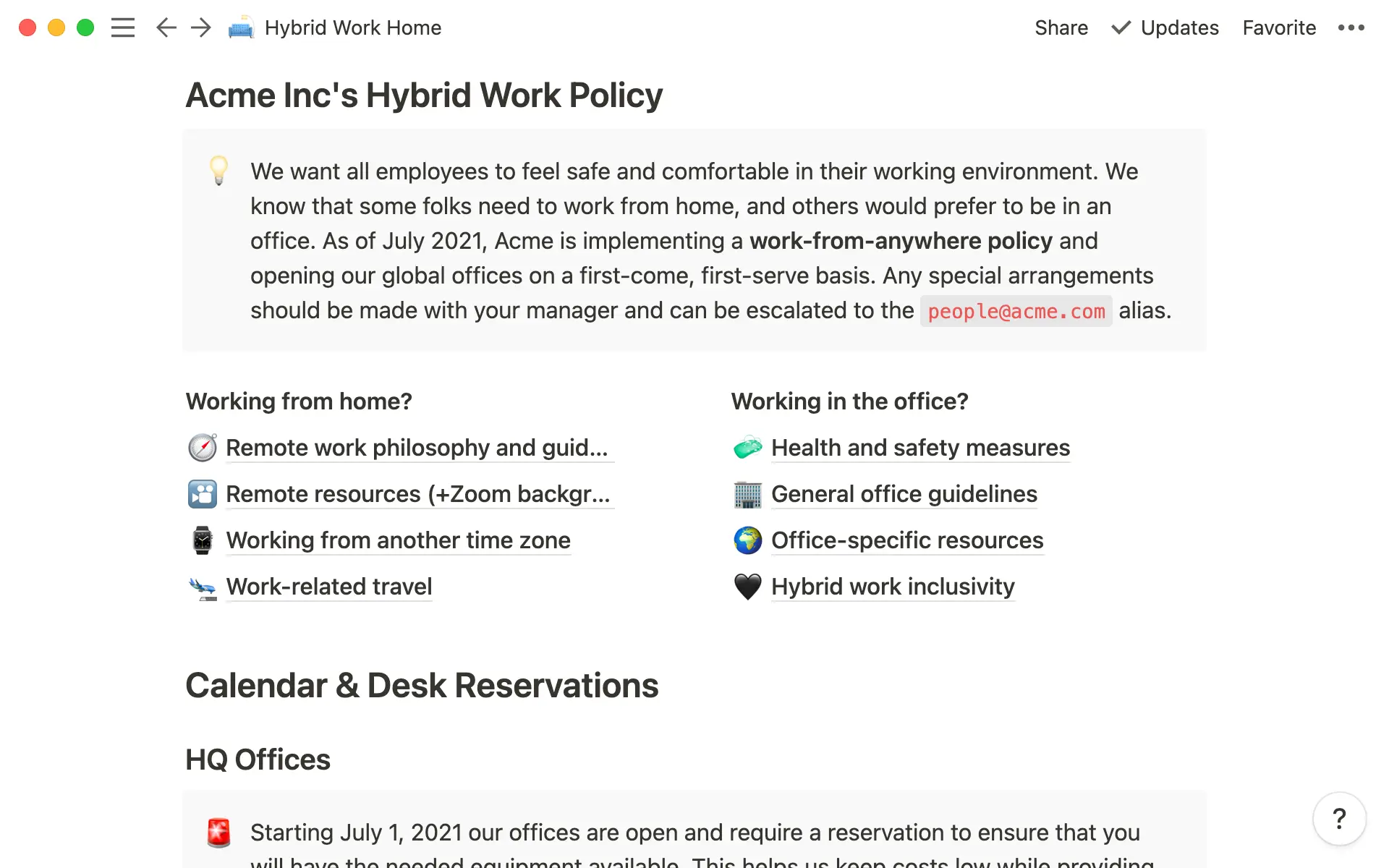
- Consolidate important documents into a wiki
- Create workflows for managing logistics with databases
- Bring your document to life
- Have fun and celebrate team culture
As the world and workplace adapt to guidance surrounding COVID-19, many workplaces are navigating conversations around hybrid working environments where some employees work remotely, while others work in an office space. One of the most important things for the success of a hybrid model is clear communication and expectation setting across all employees.
When information is organized and accessible for your team, you empower them to do their best work, wherever they are, and wherever they want to be. Processes, philosophies, and guidelines live in one place and can be easily updated, which is especially important in a landscape where the ground is shifting constantly.
Give your teams one easy place to access all of this information with a rockstar wiki. This acts as the single-source of truth for teams navigating a new way of work.
Guidelines and philosophies — bring together the many, many emails and updates about working environment into one single-source of truth. Clearly outline expectations for office workers and remote workers, and those who do a little bit of both — like when to change your Slack status, for example. Where you can, communicate philosophies behind decisions so that employees can understand the company vision.

Health and safety measures — this will be top of mind for many employees. Your company likely already has documentation around the important work you're doing to keep folks safe, so make sure it is linked here for all to read. (If you're not familiar with backlinks, this would be a great place to use them). You can even include PDFs or embedded web pages here to share external resources, like local, state, or global guidelines.
Zoom backgrounds — don't forget your remote friends when designing a hybrid work hub. Foster unity and culture by distributing "official" company zoom backgrounds for all types of occasions.


Is your team working entirely remotely?
Hybrid work requires an intentional operational shift not only from the days before the pandemic, but also from the "normal" of the past year and a half. Often, it takes some upfront work to build these systems but once you do, the payoff is immense for your teammates working anywhere in the world.
Notion databases are the way to go here. Not only do they organize work, they also act as a place to do the work — each cell opens up into its own page. Teammates can see what’s happening at a high level, and dig deeper inside pages if they want more info. This helps sow transparency between individuals and teams.
Reserve desks, conference rooms, and other equipment — between health and safety measures and team growth, many groups are working in capacity-constrained spaces. Ensure everyone has the equipment they need for work by creating a sign-up system for desks and conference rooms. Try using a linked database and formulas for extra texture to keep track of special requests like ultra-wide monitors, accessible seating options, or after-hours access.
Collect lunch orders — create a single calendar for office events and lunches so people can order ahead of time. This also helps create consistency in process so no one ends up left out because they missed that one important Slack message.
Detail daily procedures — a list is a nice way to package need-to-know information like what to do if you're the first one to arrive at the office, or the last one to leave. You can include information on greeting visitors, requesting snacks, and more. Because it's a database under the hood, you can add properties like
responsible team member,updated time,location, and more to better organize information.Link to your company directory — if you have multiple offices, consider adding a
visitingproperty to your people directory, and adding a filtered view in your environment hub so that resident employees can stay connected.
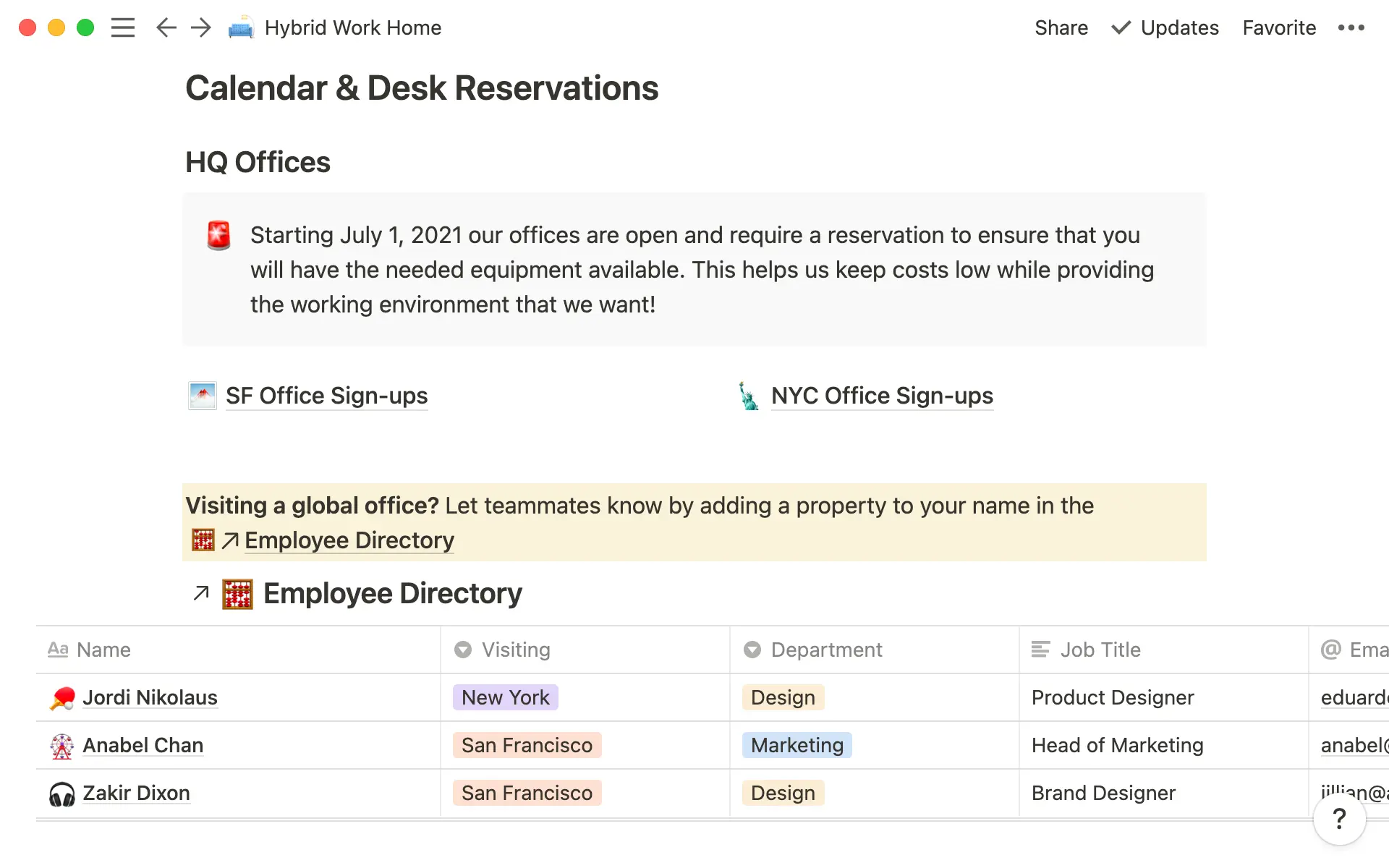

All things databases!
Your digital working environment should be as dynamic as your physical one. Invite employees into the conversation with embedded elements and automations.
Request feedback in an embedded Typeform — you’re doing your best to make the environment work for everyone. Try including an anonymous feedback form inline so that you can better understand employee engagement. Simply use the
/typeformcommand to get started.Connect to a Slack channel — things change! That's ok. Keep the company up to date by setting up automatic Slack notifications for updates to key documents. Remember that health & safety guidelines page? Don't leave employees to wonder how your company is responding to changing regulations - set up an
@channelthat triggers when updates are made to your page.Create a poll for an upcoming event — ask questions at all hands with a "Q&A" database. Not only does this help remote workers stay connected, it promotes equity across all environments ensuring that every voice is heard. Using databases, add a people property for "upvoted by" add a second property with this formula to tally the number of votes
(if(empty(prop("🔺 Upvoted By")), toNumber(""), length(prop("🔺 Upvoted By")) - length(replaceAll(prop("🔺 Upvoted By"), ",", "")) + 1).

Want to see how else you can use upvote formulas?
Building culture remotely is a key piece of managing a hybrid team, especially for newly onboarded teammates. Create spaces for fun and connection.
Schedule virtual events — use a calendar (and create a list view) to advertise virtual events like happy hours and workshops. Consider using Zapier or automate.io to integrate google calendar with Notion and store extra details about the event in a linked location.
Show off office tunes — if your team contains music connoisseurs, consider sharing your favorite playlists inside Notion. Play them at team meet-ups, or before your next all-hands!
Create a reading/watching list — use the Notion Web Clipper to add insightful articles to a shared database. Or, do the same thing with your favorite binge-worthy TV shows that are captivating lunch table conversation. This makes it easier for employees in all locations to form genuine, human connections.
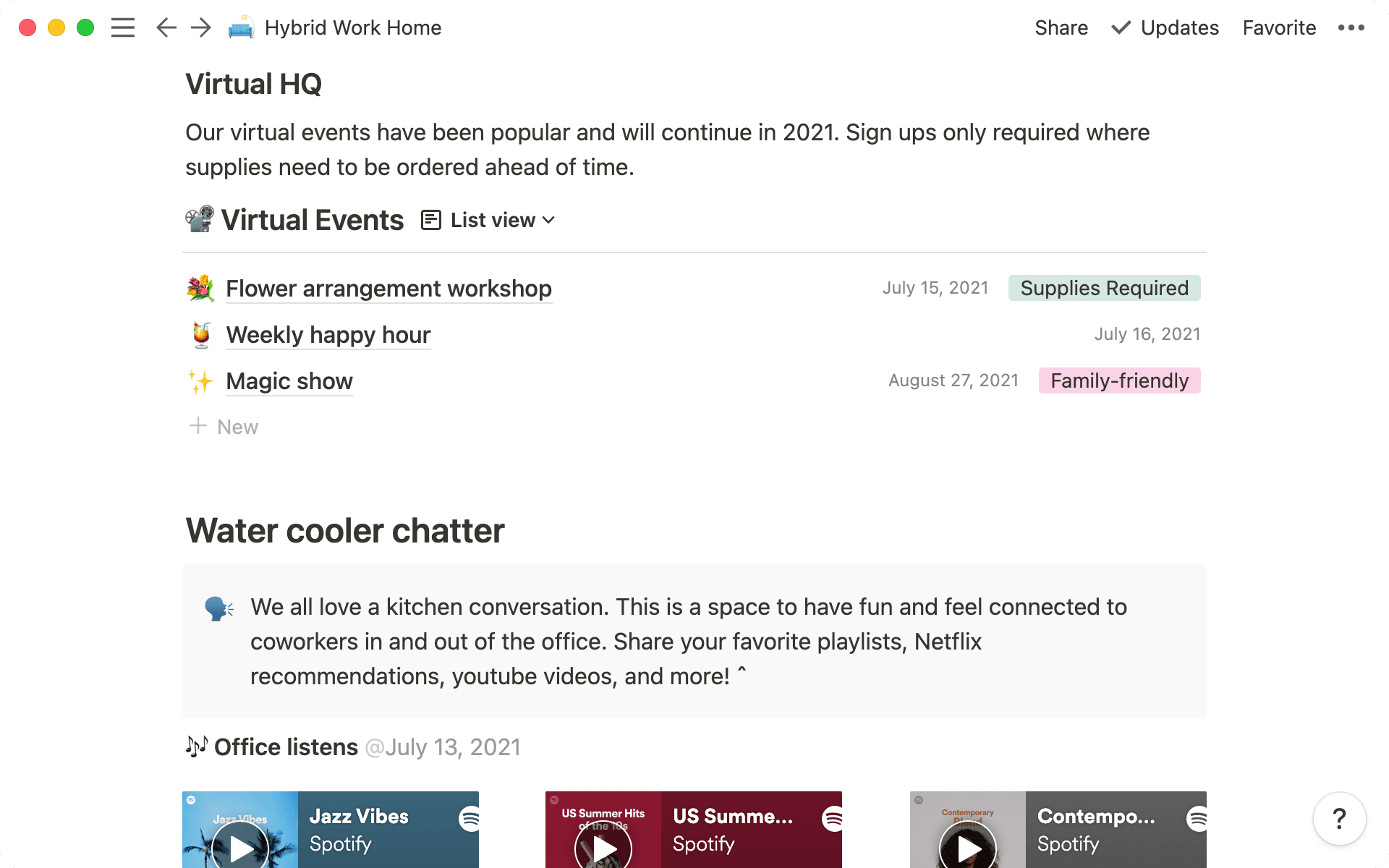
There's no one-size-fits-all approach to working environment, and there's no one-size-fits-all tool to manage it. Use the strategies above and customize your Notion space to work for you!
Something we didn’t cover?


